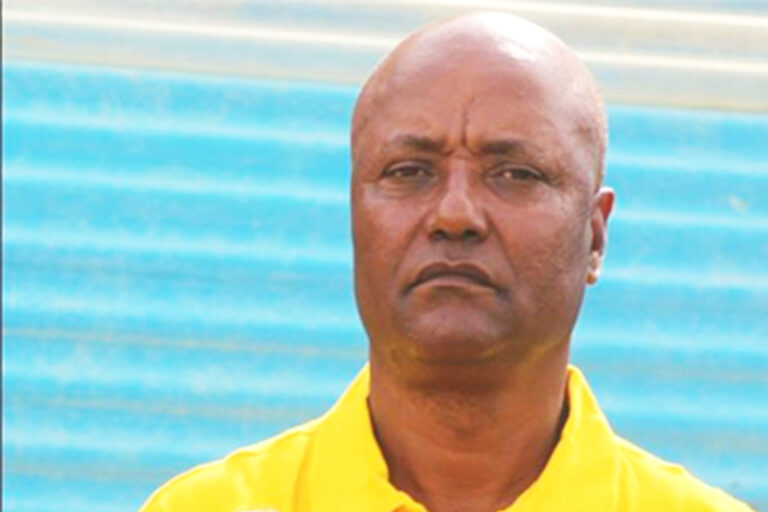By Dr. Eng Tsega Tibebu
Introduction
Yes Ding-Dong! The bells are tolling! It is a wakeup call for all the countries of the Nile Valley and the African Union. The world is witnessing a shameful squabble between Egypt, Sudan and Ethiopia on the impounding ( water filling) schedule of a dam in Ethiopia. It is worth noting that Egypt is harvesting a great benefit by using the waters of the Blue Nile for all aspects of its related development. The unbalanced water sharing between Ethiopia, Egypt and Sudan, has been going on for centuries, with negative result of unquantifiable loss of valuable opportunities of water resources development in Ethiopia. Accordingly, a change of norms and procedures are required to allow all the Nile valley countries to be equal beneficiaries of their water resources. The following brief historical account will clarify the existing situation.
Brief Historical Background
Since the prehistoric times, the Nile has been flowing unimpeded downstream to the Sudan and Egypt. This situation has helped the development of a legendary saying, that Egypt is the gift of the Nile. Following this proverbial saying, a myth has also developed to the extent that the flow of the river was controlled by some Gods, which the Egyptians were said to worship. The worship of the Gods was known to reach a climax, both when the river raged by overflowing its banks, and when it flowed below normal flood level. During the times of excess flow, the river was noted to have a devastating effect on the Egyptian population and surrounding areas. On the other hand, when the river flowed at very low stage, it was a sign of impending famine due to absence of adequate water that was essential for farming. With regard the Egyptian‘s strong attachment to the Blue Nile, the role played by the British during the colonial period is worth recalling. The British were known to have influenced them to believe that they were the rightful beneficiary of the Nile water. A proof of this assumption could easily be found in the various water partition agreements, which were drafted by the British during the colonial times and which were signed both by Egypt and Sudan, by excluding all the other Nile Valley countries. This is perhaps one of the main reasons as to why the Egyptians have adopted a wayward attitude to the construction of the Grand Renaissance Dam, which is being built by Ethiopia. Logically speaking and considering the facts on the ground, there are ample possibilities for both Egypt and Sudan to be free from complete dependence on the Blue Nile. The following is an account of alternative possibilities which could lead to harmonious development of all the inhabitants of the Nile valley.
Alternative Water Resources Development Possibilities for Egypt and Sudan
The following alternative possibilities for water resources development require serious study to arrive at the most sustainable benefits:-
The Nubian Sandstone Aquifer System
The Mediterranean and the Red sea sources for desalination
The lake Victoria storage with Jonglei canal scheme
Diversion from the Congo river
Recycling of domestic, industrial and irrigation canal wastes
The Nubian Sandstone Aquifer System
The Nubian Sandstone Aquifer System extends all over Egypt, eastern Libya, northern Chad and northern Sudan. Recent estimates show that it is about 450,000 cubic kilometers in volume. To cite an example, the Nubian Sandstone Aquifer development scheme by Libya could be mentioned. The successful irrigated farm development by that nation has helped it to be exporter of agricultural products, and has led it to attain a high standard of living. A similar development scheme could relive Egypt from complete dependence on the Blue Nile River.
The Mediterranean and Read Sea Desalination Alternatives
Humanity is now living in what is known to be the twenty first century and decades have passed since man has split the atom, and now we are proceeding to what is known as ‘fusion energy’. Whatever the progress in that direction, the desalination of sea water is already becoming economically feasible due to cheap electric energy. As a result, the desalination of water from either the Red Sea or the Mediterranean sea proves to be an attractive alternative source of water for Egypt and Sudan.
So, ding-dong! The bells are tolling! It is a wakeup call for our Egyptian and Sudanese brothers, who are in deep sleep given the fact that eight years have passed since the official commencement of the construction of the Grand Renaissance Dam in Ethiopia. Needless to state that the duration was more than adequate, to plan and execute any of the alternatives, that are being mentioned in this article.
Storage In lake Victoria With a By-pass Canal Across the Sudd
From information obtained from the British administration of both Sudan and Egypt, during colonial times, we know a scheme to build a water storage dam Lake Victoria for the purpose of augmenting the flow of the White Nile. It is known that the Blue Nile comprises about 85 % of the total Nile flow from many years of measurements at the gauging station in Khartoum. Neglecting the flow contribution of the Sobat River, which originates in Ethiopia, the flow contribution of the Blue Nile amounts to about 50 billion cubic meters per year. By contrast, the contribution of the White Nile is only 14 billion cubic meters, as found by many years of measurement at Khartoum. Naturally, this great difference in flow volume is one of the main causes of the great Egyptian attachment to the Blue Nile. The main difference in flow between the two rivers is caused by the presence of a wide expanse of marshy depression, which obstructs and traps the White Nile and lets it to waste its water by evaporation. The marshy is known to extend for some 8000 square kilometers in normal times and another additional 8000 square kilometers during the wet seasonal floods. What little amount of flow that remains, trickles down to joins the Blue Nile finally at Khartoum.
Diverting Part of the Voluminous Flow Of the Cong River
The flow of the mighty Congo river is estimated to be 40,000 cubic meters per second, most of which empties into the Atlantic Ocean. It has a gigantic electric generating potential of about 44,000 megawatts. Common sense shows that a considerable volume of water could be transferred to the Nile valley for any required purposes downstream. It is therefore an appropriate time for all the Nile valley countries to forge a cooperative union for the proper management of their natural resources. Piece meal projects, with the sole aim of building personality cults should be discouraged and be replaced by a wider scope which focuses on the benefit of the entire continent. Finally, with regards to the alternatives enumerated above, the last two should be preceded by preparation of a Nile valley water resources master plan for proper sequencing of feasible and sustainable projects. Therefor it should be emphasized that these two diversion schemes and any other one that could be planned, should focus strictly to the mutual financial, environmental benefits of the African people without any possibility for smuggling any water outside the continent.
Concluding Remarks
The squabble on the formation of a time table for the filling of the Grand Renaissance Dam of Ethiopia is regrettable. It is pure elementary economics which governs the commissioning of project. It is elementary economics to sense that the money invested on any project should be amortized within a specific period of time. The world knows that the construction of the Grand Renaissance dam was officially started eight years ago, thus giving ample time for providing any alternative solution for any imaginary or real water stress expected downstream in Egypt. Given the fact that the Grand renaissance’s storage capacity of about 74 billion cubic meters, it becomes purely a puzzle to schedule water impoundment, every time it exhausts its storage for electric generation. The water filling schedule should be automatic without any third party interference. Accordingly, the current agenda for discussing the reservoir impounding schedule becomes purely impractical, from the fact that it becomes repetitive every time the stored water is exhausted for electric generation. Accordingly, the discussion agenda should have been right from the beginning, on finding possible alternative solutions, which the Egyptians should or could implement. However, whatever the current situation, it is quite appropriate for Egypt to compensate for any possible financial loss, that would accrue by any delay of the commissioning of the dam. As shown in the above possible alternatives, the hurly-burly of negotiation on the delaying of the reservoir filling is quite a comedy, because it is surely a repetitive action required, every time the storage is exhausted by the yearly electric generation.
So ding-dong! The bells are tolling! It is a wakeup call for the Nile Valley Countries and the African Union, to setup guidelines for the proper and sustainable management of their natural resources.
It is also time to nominate the Ethiopian Prime Minister Dr. Abiye Ahemed and his crew, as ambassadors for Environmental Protection and Regeneration, to help them create a mass movement for planting trees, across all the Water Towers of Africa!





